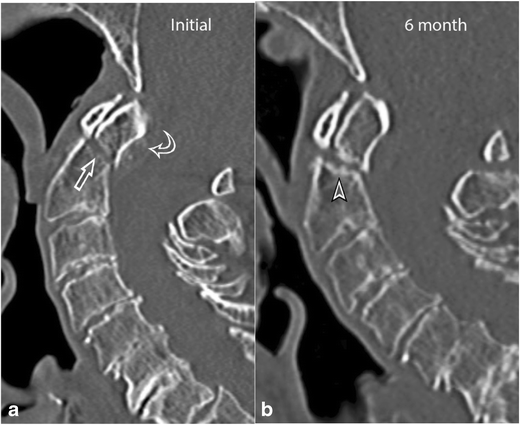
It arises from the side of the body, is directed laterally in front of the foramen, and ends in a tubercle, the anterior tubercle.


The pedicles are directed laterally and backward, and attach to the body midway between its upper and lower borders, so that the superior vertebral notch is as deep as the inferior, but it is, at the same time, narrower.The lower surface is concave from front to back, convex from side to side, and presents laterally shallow concavities that receive the corresponding projecting lips of the underlying vertebra.The upper surface is concave transversely, and presents a projecting lip on either side.The anterior and posterior surfaces are flattened and of equal depth the former is placed on a lower level than the latter, and its inferior border is prolonged downward, so as to overlap the upper and forepart of the vertebra below.The bodies of these four vertebrae are small, and broader from side to side than from front to back.The first, second, and seventh vertebrae are extraordinary, and are detailed later. The general characteristics of the third through sixth cervical vertebrae are described here. īy convention, the cervical vertebrae are numbered, with the first one (C1) closest to the skull and higher numbered vertebrae (C2–C7) proceeding away from the skull and down the spine.

The giraffe's neck is elongated by heterochrony, extension of the time for the embryonic development of these bones. The remainder of this article focuses upon human anatomy.ĭespite greatly differing neck lengths, okapi (left) and giraffe (right) both have seven cervical vertebrae. In humans, cervical vertebrae are the smallest of the true vertebrae and can be readily distinguished from those of the thoracic or lumbar regions by the presence of a foramen (hole) in each transverse process, through which the vertebral artery, vertebral veins, and inferior cervical ganglion pass. Most mammals have seven cervical vertebrae, with the only three known exceptions being the manatee with six, the two-toed sloth with five or six, and the three-toed sloth with nine. The vertebral transverse processes of mammals are homologous to the cervical ribs of other amniotes. In lizards and saurischian dinosaurs, the cervical ribs are large in birds, they are small and completely fused to the vertebrae. In sauropsid species, the cervical vertebrae bear cervical ribs. Truncal vertebrae (divided into thoracic and lumbar vertebrae in mammals) lie caudal (toward the tail) of cervical vertebrae. In tetrapods, cervical vertebrae (singular: vertebra) are the vertebrae of the neck, immediately below the skull.


 0 kommentar(er)
0 kommentar(er)
